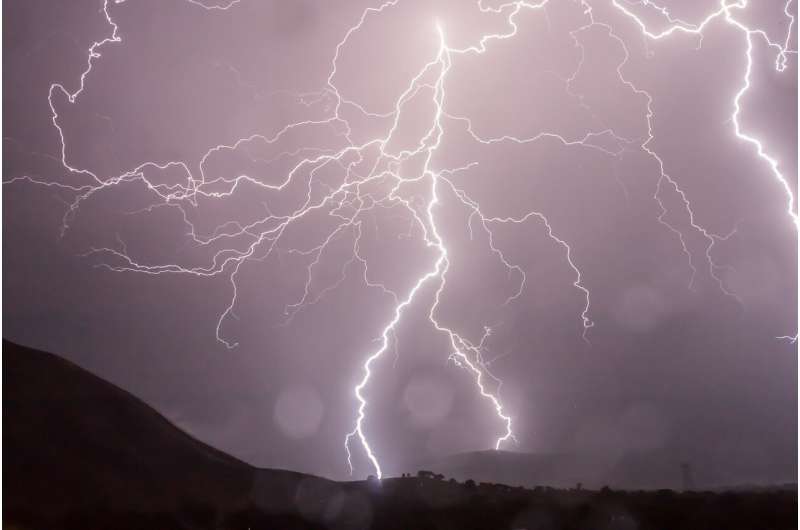Using AI to predict where and when lightning will strike

Lightning is one of the most unpredictable phenomena in nature. It regularly kills people and animals and sets fire to homes and forests. It keeps aircraft grounded and damages power lines, wind turbines and solar-panel installations. However, little is known about what triggers lightning, and there is no simple technology for predicting when and where lightning will strike the ground.
At EPFL's School of Engineering, researchers in the Electromagnetic Compatibility Laboratory, led by Farhad Rachidi, have developed a simple and inexpensive system that can predict when lightning will strike to the nearest 10 to 30 minutes, within a 30-kilometer radius. The system uses a combination of standard meteorological data and artificial intelligence. The research paper has been published in Climate and Atmospheric Science, a Nature partner journal. The researchers are now planning to use their technology in the European Laser Lightning Rod project.
"Current systems are slow and very complex, and they require expensive external data acquired by radar or satellite," explains Amirhossein Mostajabi, the Ph.D. student who came up with the technique. "Our method uses data that can be obtained from any weather station. That means we can cover remote regions that are out of radar and satellite range and where communication networks are unavailable."
What's more, because the data can be acquired easily and in real time, predictions can be made very quickly—and alerts can be issued even before a storm has formed.
Training the machine using available data
The EPFL researchers' method uses a machine-learning algorithm that has been trained to recognize conditions that lead to lightning. To carry out the training, the researchers used data collected over a ten-year period from 12 Swiss weather stations, located in both urban and mountainous areas.
Four parameters were taken into account: atmospheric pressure, air temperature, relative humidity and wind speed. Those parameters were correlated with recordings from lightning detection and location systems. Using that method, the algorithm was able to learn the conditions under which lightning occurs.
Once trained, the system made predictions that proved correct almost 80% of the time.
This is the first time that a system based on simple meteorological data has been able to predict lightning strikes through real-time calculations. The method offers a simple way of predicting a complex phenomenon.
More information: A. Mostajabi, D. L. Finney, M. Rubinstein, F. Rachidi, "Nowcasting lightning occurrence from commonly-available meteorological parameters using machine learning techniques," npj Climate and Atmospheric Science, 2019 doi.org/10.1038/s41612-019-0098-0
Journal information: Nature
Provided by Ecole Polytechnique Federale de Lausanne





















